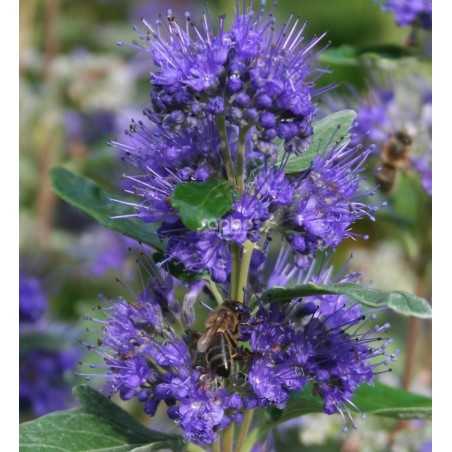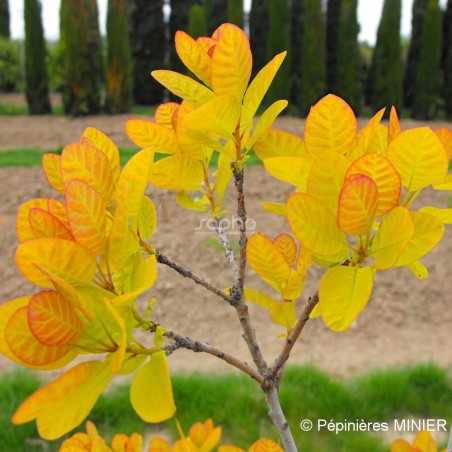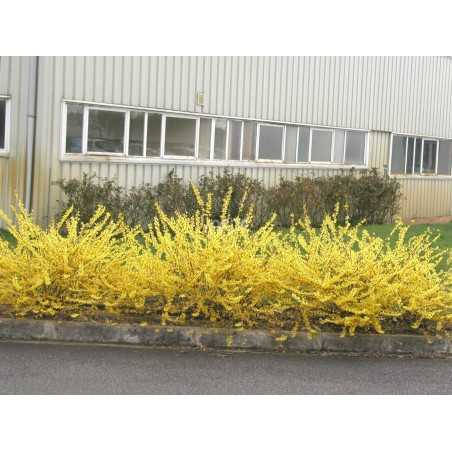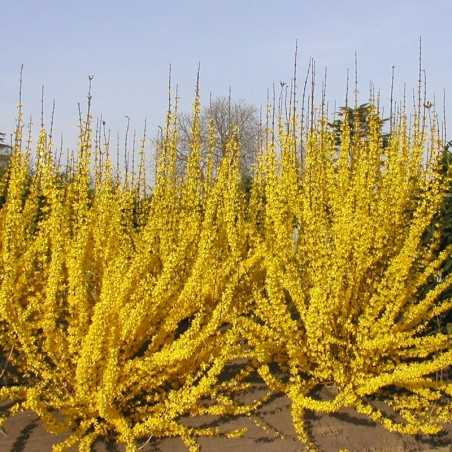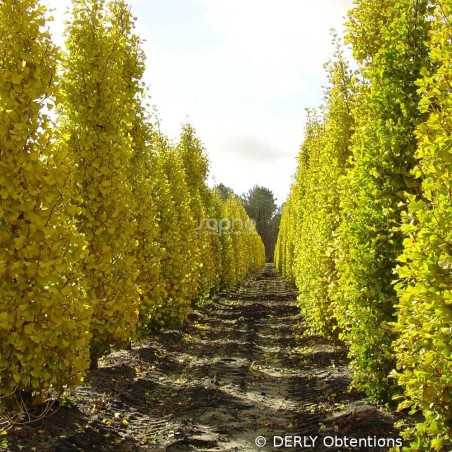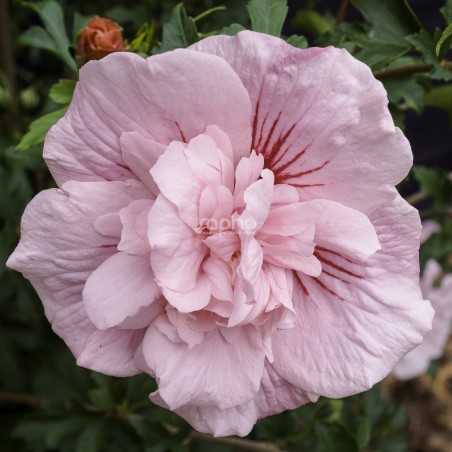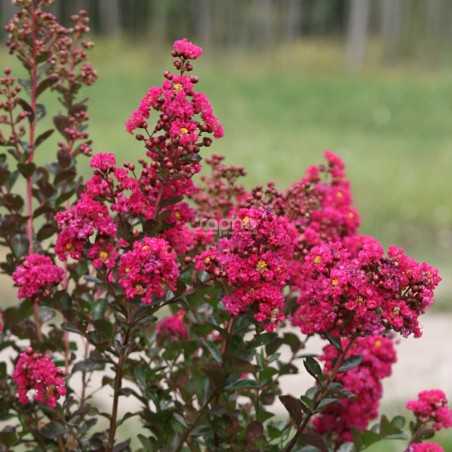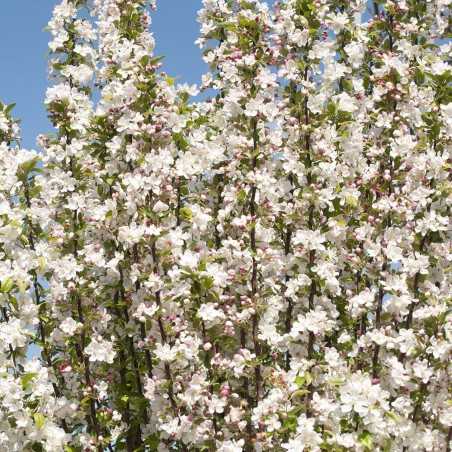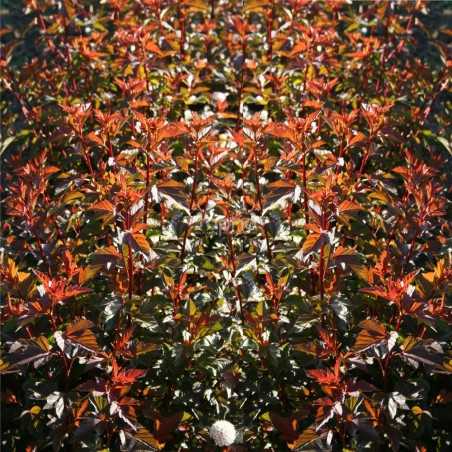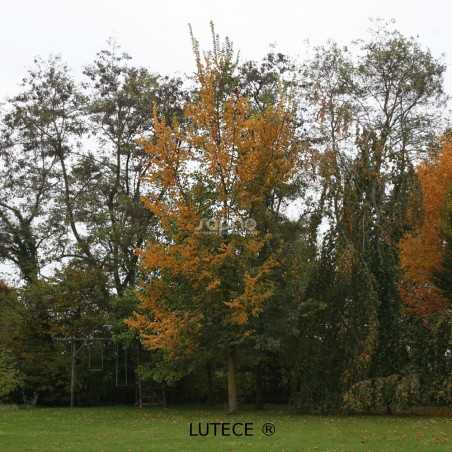The bluest of all Caryopteris - GRAND BLEU® has been a STAR shrub for nearly 15 years.GRAND BLEU ® is a dense, bushy rounded shrub. Its growth is regular. It is suitable for container growing.Its abundant and late flowering spreads from August to October. The flowers have long stamens and are of a remarkable deep dark blue, which is highlighted by the bright, dark green characteristic foliage. Like all Caryopteris, the foliage gives off a turpentine smell when touched.GRAND BLEU ® attracts attention, when it is associated with shrubs or brightly coloured perennials. It is very suitable for planting in large quantities in public spaces, or as a sole shrub in gardens of moderate size.Trophies: Bronze medal at PLANTARIUM 2007 (Boskoop - Netherlands)
Categories
Menu
Nos stars
A cultivation which will wake up beds and mixed hedgesGOLDEN LADY® 'MINCOJAU3' is a real improvement on the existing golden varieties. In spring it has beautiful young, bright orange shoots which progressively turn golden yellow. The foliage turns a yellow green in summer and is not affected by the sunlight. It becomes orange in the autumn.The cream - pink inflorescences appear in July.Being dense and branching naturally, this cultivation is easy to grow in containers.The bright and varied tints of the foliage are at their best when the shrub is grown in a bed or a mixed hedge.
The first ground-cover Forsythia has been STAR for more than 25 years.MAREE D'OR ®, about 0.80 m high and 1.50 m wide, layers naturally and as such has all the qualities of a good ground cover.Its grapefruit yellow, abundant flowers are early, in February - March, depending on the regions and climate. It flowers on the previous year's stems.The light green foliage comes after the flowers and completely covers the stems.Because of its principal function as a ground cover, MAREE D'OR ® can be used grouped on banks, guide islands, roundabouts and their green areas, using 1 plant per square meter. It can stand being planted on slabs, in containers and flower boxes.
A touch of light in beds and mixed hedges ... highly appreciated by garden lovers for a long time!
WEEK-END® is interesting as it keeps its dense and branched shape, thus reducing the need for pruning to a minimum.Its abundant, golden yellow flowers start blossoming at the beginning of March, depending on the region (according to 'Lynwood').A 'must' in cultivation... and for a long time appreciated by garden lovers: a touch of sunshine in the garden from March onwards and for a flowering hedge. There is no need to cut back regularly thanks to its naturally dense and upright shape. WEEK-END® can also be planted in big tubs.
The pyramide shaped maidenhair tree.
Its moderate dimensions and its pyramide shaped even growth allows this beautiful Ginkgo selection to be used in gardens, planted in rows and grown in large containers.'Blagon' is spectacular in the autumn due to its golden yellow colour. For 30 years, the original stock plant has still not told the secret of its «flowers», meaning we still don't know if it is a male of female tree.It is rustic, resistant and adapts well to urban conditions.
The charm of the CHIFFON range and pink flowers with a red heart
From July to September, LAVENDER CHIFFON has flowers with fine, lavendar coloured petals, the base of which are streaked with red. This selection is suitable as a single plant or in shrub borders and associates harmoniously with the other varieties of the CHIFFON range, a valued asset to the summer decor of any garden.
The fuchsia coloured lilac of the INDIYA CHARMS® rangeThe young red shoots make room for big shiny leaves, purple green to bronze, depending on the conditions. The early flowers bloom as very thick fuchsia coloured, nearly red thyrses.BRAISE D'ÉTÉ®, CAMAÏEU D'ÉTÉ®, FUCHSIA D'ÉTÉ® and VIOLET D'ÉTÉ® are the four varieties of the INDIYA CHARMS® range of our program. They offer pretty shades of mauve, violet, pink and red, adding bright summer colours to shrub borders and mixed hedges. Stem-grafted, in pots or in the ground, they decorate any entrance, terrace or, more traditionally, can be planted in a row.They can also be trained along a south facing wall.
Naturally a STAR since its creation.
This tree is of semi-spreading growth, reaching a height of 3 to 4m in ten years and has a harmonious shape, which it keeps without the necessity of pruning. Its foliage is green.
In April, 'Evereste' covers itself in bright pink flower buds, which bloom as pure white bouquets of flowers. The quality and the abundance of its pollen make it an ideal pollinator, precious for fruit growers (in proportion of 6 - 8% of all varieties of early or semi-early flowering).
The cherry sized fruits are orange with thin red stripes. They apprear in autumn and have the particularity to last well into winter.
'Evereste' has also been chosen by the INRAE selectors for its resistance to the major diseases such as fire blight, scab and mildew.
Nearly a million plants have been sold in Europe since its creation in 1974.
Its ornamental qualities, its reasonable dimensions and its easy care make it an excellent small urban tree if grown full standard; in clumps it is very valuable in the composition of flowering hedges and in shrub borders.
In springtime light, pretty copper shimmering foliage.This shrub is remarkable for its dense, deciduous jagged foliage, with its original orange copper shades in spring, turning to purple in summer and autumn. It prefers a sunny position to develop its beautiful colours.It has bushy habit, dense, stocky with strong, straight branches.Small balls of white flowers bloom from May to June. They are followed by red fruits in summer.DIABLE D'OR® suits well in mixed free hedges. Its copper shimmering in springtime, turning to purple later on makes it very precious for creating seasonal variations in the colours of the hedges foliage. The flowers and fruit add to its ornamental value.
Resistant to the Dutch elm disease, our towns and countryside have found the elm again.
Tested by INRAE, this hybrid is the result of cross fertilization of six French varieties, plus an English and a Chinese one. It is resistant to the Dutch elm disease. Its bark is smooth. The leaves are quite similar to the common elm tree: asymmetrically toothed, with a rough underside. The deep green foliage is dense. In the autumn it has a beautiful golden yellow tint. In March, before the leaves, grow discreet flowers in the shape of little red globules without petals. Its slender trunk gives LUTECE® a perfect aptitude for a high-stem training, better than Ulmus RESISTA® 'Sapporo Gold'; growing naturally its habit is regular and homogeneous. It also makes a very good shrub. It is fast growing. Perfectly adapted to landscape hedges, this cultivation is equally interesting planted in groups on an embankment for example, but also as individual tree or grown in line if it has been grown as a full standard. The name of LUTÈCE® was given to it in recognition of the help provided by Parks and Gardens Department of the city of Paris for having taken care of a field of experimentation in the Vincennes Park.

